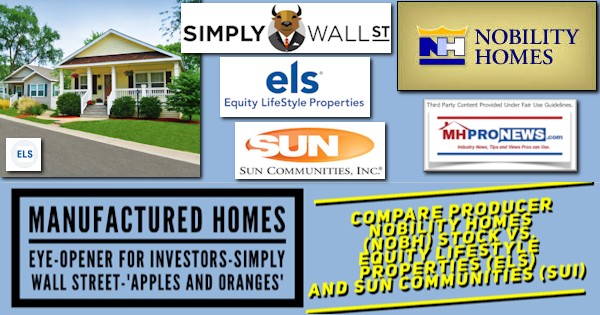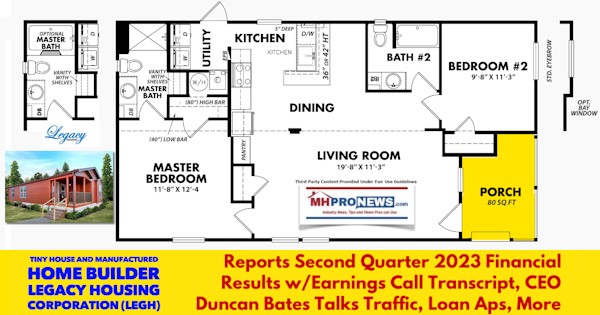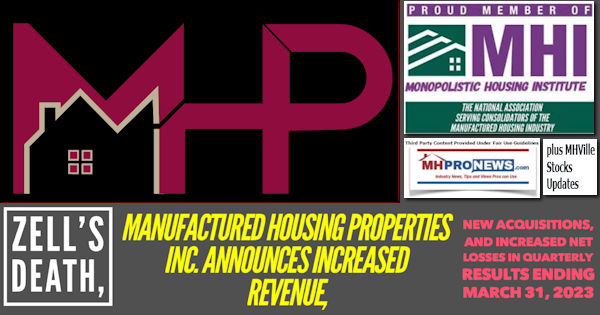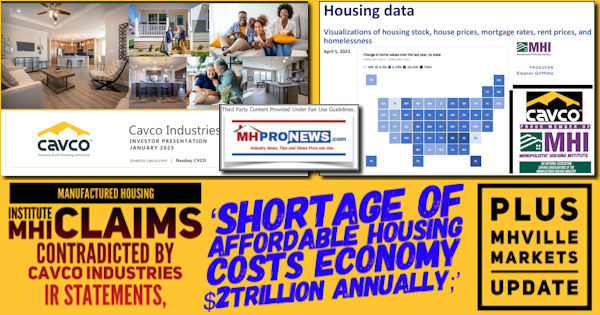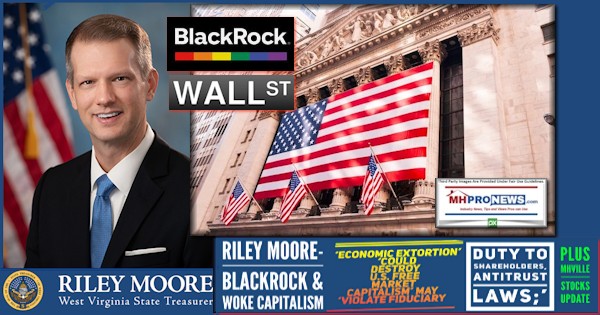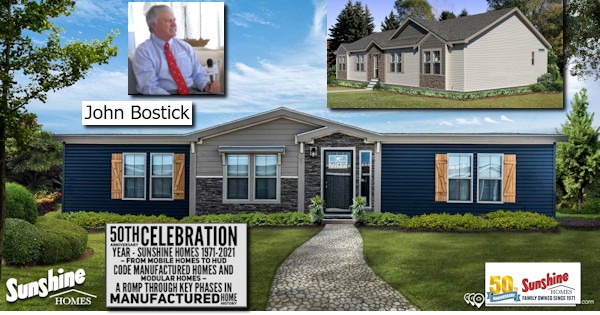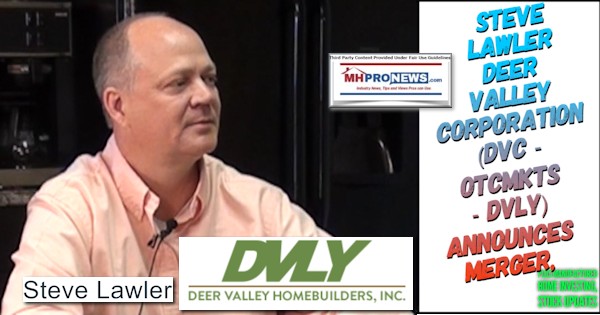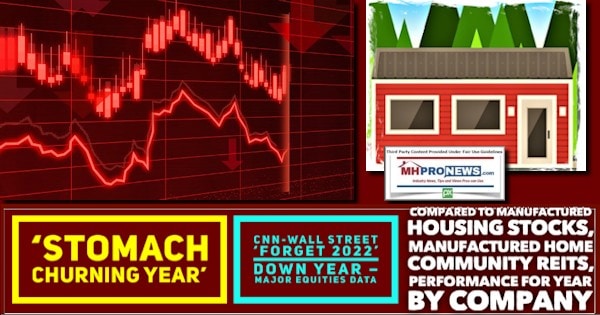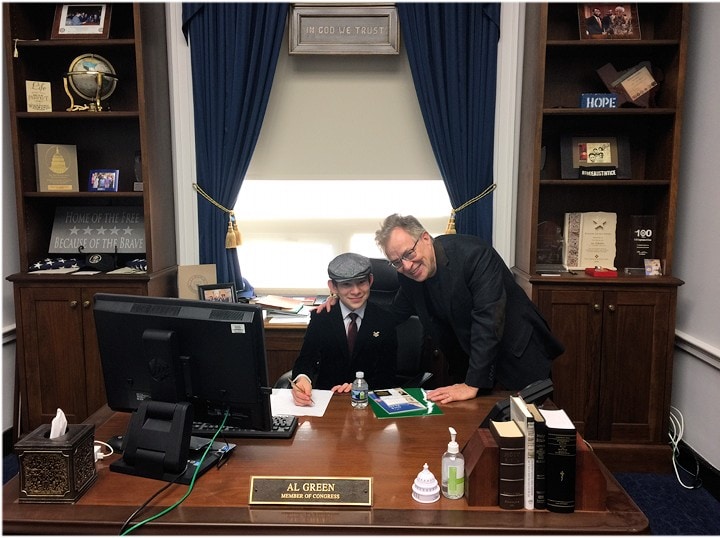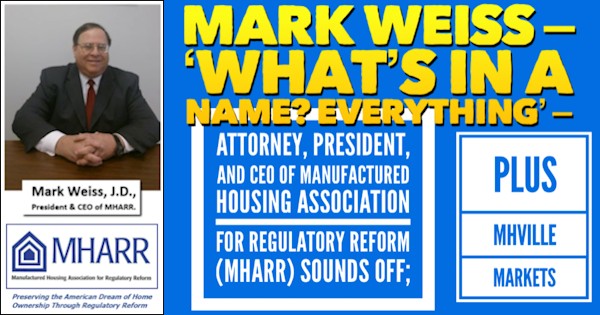
To grasp the subtlety in Mark Weiss’ opening lines, it is useful to know that he is an attorney, besides being the 2nd President and CEO of the Manufactured Housing Association for Regulatory Reform (MHARR). In as much as the words “regulatory reform” are part of MHARR’s name, when you see the words “regulatory lawyer,” well…you should now get the drift. With that brief tee up, Weiss dives into the importance of the choice of words, or even punctuation, in legislation. Manufactured Housing Institute CEO Lesli Gooch may be a Ph.D. in political science, but Weiss could obviously school her on several subject as he did in an exclusive with Mobile and Manufactured Home Living News (MHLivingNews) found at this link here.
Names matter. Words matter. The details matter. More on that following in Part II of this article. Part I is Weiss’ latest “MHARR Issues and Perspectives.”
Part I
MHARR – ISSUES AND PERSPECTIVES
By Mark Weiss
November 2023
“WHAT’S IN A NAME? — EVERYTHING”
Shakespeare famously asked, “What’s in a name?” If Shakespeare had been a lawyer – especially a regulatory lawyer – he would not have bothered to ask. He would have known the answer. For a regulated industry, such as manufactured housing (and especially a federally regulated industry), names, or more specifically, definitions – and the legal consequences of those definitions – are crucial. They determine, in many cases, what is covered by a statute and what is not. Or, in other instances, how a given item or matter is treated and how it is distinguished from related or similar items or matters for purposes of a statute or regulation. That is why, in virtually every instance, names that have a specific legal meaning – i.e., “terms of art” – are typically defined near the beginning of statutes and regulations where they appear or are referred to. That is also why a change to – or modification of — a statutory or regulatory definition is not to be undertaken lightly. Even a minor change, such as the placement of punctuation or the wrong word inserted at the wrong place, can lead to unintended and potentially devastating consequences. That is why the HUD Code industry and the consumers who depend upon affordable, mainstream manufactured housing, should be extremely wary of proposed changes to the current statutory definition of “manufactured home” being touted by the Manufactured Housing Institute (MHI) and their potentially unforeseen impacts on an increasingly crowded and competitive affordable housing marketplace.
An object lesson regarding the importance of statutory and regulatory definitions can be found in the recent history of the federal manufactured housing program itself, under the industry’s own federal statute and related regulatory definitions. On October 3, 2014, former HUD program Administrator, Pamela Danner, issued a memorandum to HUD Code manufacturers stating that manufacturers “may not design or build manufactured homes labeled pursuant to the National Manufactured Home Construction and Safety Standards for multifamily or other non-single family residential use.” (Emphasis added). The same memorandum stated that manufactured homes “bearing a HUD certification label may not be sold for purposes other than single family use,” citing section 3280.2 of the HUD standards. That section defines a “manufactured home” as a “dwelling” and further defines a “dwelling unit” as “one or more habitable rooms which are designed to be occupied by one family with facilities for living, sleeping, cooking and eating.” (Emphasis added). According to Director Danner, then, the 24 U.S.C. 3280 HUD manufactured housing standards in general – and the 24 U.S.C. 3280.2 regulatory definitions in particular – limited the design and use of manufactured homes to single-family dwellings (i.e., no “multi-family” manufactured housing allowed as a matter of law).
There was only one problem with this directive and its reasoning, as then-MHARR President and CEO, Danny Ghorbani, pointed out in a November 12, 2014 letter to the Director. That communication states in relevant part:
“[T]he restriction [to single family use] exceeds relevant statutory authority. The statutory definition of ‘manufactured home’ contained in 42 U.S.C. 5402(6) states that a manufactured home is a ‘dwelling,’ but does not otherwise define a ‘dwelling’ or limit a ‘dwelling’ – either expressly or implicitly – to a ‘single-family’ home. Thus, there is no statutory support for the 3280.2 restriction of a ‘dwelling unit’ to occupancy ‘by one family.’ As the recent decision of the United States District Court for the District of Columbia in American Insurance Association v. Department of Housing and Urban Development (No. 1:13-cv-00966) makes abundantly clear, federal regulations may not exceed the scope of the underlying grant of authority from Congress.” (Emphasis added).
The rest, as they say, is history (or is almost history). HUD was forced to acknowledge the error of its legal analysis and memorandum. That opened the way for the Manufactured Housing Consensus Committee (MHCC) to consider, debate and recommend a proposal to modify the federal standards to expressly authorize multifamily manufactured homes and to establish specific federal construction and safety standards applicable to such homes. Those recommended standards, in turn, were published by HUD as a proposed rule on July 19, 2022 and remain pending for adoption and publication by HUD as a final rule.
And what is the moral of this story? Simply this – that definitions are important in a statute, especially when that statute, like the federal manufactured housing law, establishes a unique regulatory system (including both standards and enforcement procedures), for a unique type of housing, which is expressly tasked with striking a balance between protection and affordability. In mandating that balance – as a central feature of federal manufactured housing regulation – federal manufactured housing law, as strengthened, bolstered and augmented by the 2000 Reform Law, stands alone in the entire field of housing and (if fully and properly enforced) affords federally-regulated manufactured housing distinct advantages in serving a wide variety of affordable housing applications and contexts. This statutorily-mandated balance between protection and affordability, moreover, stemming from Congress’ express recognition of the importance of affordability within the manufactured housing market, is becoming even more important – and simultaneously more tempting and enticing – for other types of housing, as construction and energy codes for those other types of dwellings, under constant pressure from special interests, are being driven toward absurd levels of stringency and cost. This is evident, for example, in the pending 2024 iteration of the International Energy Conservation Code (IECC) as was explained in the April 2023 edition of MHARR Issues and Perspectives, entitled “More DOE Energy Outrages Coming for the Industry and Consumers.”
Put differently, current federal law and the current definition of “manufactured home” set forth in that law (as well as related standards and regulations), is crucial to defining and circumscribing the types of structures that are legally entitled to the unique protections and advantages afforded by the uniform, cost-effective and preemptive federal construction and safety standards and the uniform, cost-effective federal enforcement procedures of the HUD Code. As MHARR has long emphasized, other types of housing (and their advocates) would like nothing better than to somehow secure such regulatory treatment and competitive advantages for themselves without having to lift a finger. (See, below). And that is why the industry must exercise extreme caution in making any change to the statutory definition of “manufactured home” that could open the door – even potentially — to the conflation of other types of housing with the mainstream manufactured homes that have been federally regulated by HUD since the enactment of the National Manufactured Housing Construction and Safety Standards Act in 1974 and the adoption of the first set of federal standards and regulations in 1976.
So, what does all of this mean in relation to the current effort to delete the requirement that a manufactured home be built “on a permanent chassis,” as set forth in the current statutory and regulatory definitions of a federally-regulated “manufactured home?”
MHARR, among its very first actions when it was formed in 1985, pursued both legislation and litigation to remove the permanent chassis clause from the statutory definition of “manufactured home.” That effort, after MHI withdrew its support, was not successful. It is crucially important to note, however, that the housing market was far different 40 years ago than it is today. Four decades ago, there was no such thing as “tiny homes,” “accessory dwelling units,” or the widespread use of recreational vehicles, park models and other types of structures (even shipping containers) as permanent dwellings. As a result, removal of the permanent chassis requirement at that time would not have led to massive confusion over the lines of demarcation between different types of dwellings — and which jurisdiction or jurisdictions would have regulatory authority over their standards, construction, quality control, placement, installation and, more importantly, the enforcement of such standards and regulations. But that is not necessarily the case today.
Today, powerful forces, such as the International Code Council (ICC) – and others, including some within the HUD Code manufactured housing industry, such as Berkshire Hathaway-owned Clayton Homes, Inc – are openly promoting the widespread use and recognition of so-called “off-site construction” “off-site structures,” “off-site buildings,” “off-site homes” (as well as other variants of that term) as a source of residential housing. And what does this so-called “off-site” construction include, according to these sources? According to ICC, so-called “off-site” construction, as addressed at a June 2023 “Off-Site Construction Summit” in Washington, D.C., includes “panelized systems,” “manufactured homes,” “tiny houses,” recreational vehicles, “modular/pods” and “shipping containers,” among other things. ICC, moreover, has developed model codes for the regulation of multiple types of these so-called “off-site” structures, including (for now) modular homes and “tiny homes,” among others.
The introduction of the term “off-site” construction into the housing lexicon thus raises the first – and most critical set of questions and red flags regarding potential legislation to remove the “permanent chassis” requirement from the statutory definition of “manufactured home.” And that is, what exactly is this so-called (or, to be more accurate, conveniently-fabricated) alleged category of “off-site” construction?
Historically, in the United States, there have been only two methods of residential single-family dwelling construction, namely site-built homes and factory-built homes. Site-built homes are homes built with supplies, materials and components, among other things, delivered to and assembled on-site. Such on-site homes have historically been built to and inspected in accordance with state and/or local building codes based on the International Residential Code (IRC) or variants and derivatives of the IRC. Most types of factory-built homes, on the other hand, are constructed in a factory in accordance with the IRC or a derivative state or local code and then delivered to a site either whole or in sections. Examples of such factory-built homes include modular homes, tiny homes, panelized homes, sectional homes and others. Manufactured homes, on the other hand, while “factory-built,” are a unique category of “factory-built” homes, constructed, inspected, transported and installed in accordance with federal HUD standards and enforcement regulations. Recreational vehicles and “park models,” meanwhile are built in a factory in accordance with private “codes” maintained (and ostensibly “enforced”) by the Recreational Vehicle Industry Association (RVIA).
As previously noted, though, self-interested parties are now using the term “off-site” construction, and have put whatever types of construction they wish under that legally undefined label. Given this effort to blur the lines between comprehensively federally-regulated manufactured homes and other types of so-called “off-site” residential construction, removal of the “permanent chassis” requirement – today, if not done surgically and in isolation (i.e., without any other changes to existing federal manufactured housing law and implementing regulations and with appropriate congressional assurances and guardrails against any other such changes) — could cause chaos not only within the housing market, but with regard to the lines of demarcation and authority over the regulation and use of different types of so-called “off-site” residential construction. Further, and more importantly, just who stands to benefit from any such chaos? Put differently, given today’s more diversified housing market, what is the potential downside of removal of the permanent chassis requirement for mainstream, non-subsidized manufactured housing?
Before rushing off to Congress, then, as has become the norm for MHI and its supporters – rather than seeking the full and robust implementation of good existing laws – proponents of such a fundamental definition change should and indeed, must answer the foregoing questions and concerns, and offer a remedy or resolution to address them.
In this regard, one major downside to such a definition change is the possible conflation of other types of “factory-built” or “off-site” structures with federally-regulated manufactured housing for purposes of construction and safety regulation. This in turn, has two distinct aspects, each of which would be destructive of mainstream manufactured housing. One potential aspect is that divergent types of “factory-built” or so-called “off-site” structures would seek to qualify for treatment as a “manufactured home” without meeting all of the rigorous elements and aspects of the HUD Code (i.e., obtaining favorable treatment as “manufactured homes” by stealth). Such structures, if passed off as “manufactured homes” without meeting all of those rigorous and comprehensive federal manufactured housing construction and safety standards, would not only expose occupants to unnecessary dangers and risks, but would also undermine the superior reputation of today’s modern, mainstream, affordable HUD Code manufactured homes. Conversely, the mirror image of this de facto “passing off” of non-HUD Code homes as federally-regulated manufactured homes, would be pervasive “regulatory pull” within the HUD Code for genuine mainstream manufactured homes. “Regulatory pull” would occur where much higher-cost types of factory-built” or so-called “off-site” structures – built to much higher-cost codes – were used as the basis for advancing parallel high-cost changes to the current HUD standards, much the same as is already happening with IECC “energy” standards developed for non-HUD Code homes. Given the price-impact horrors that are already painfully evident with the pending Department of Energy manufactured housing energy standards, it is only too easy to image the devastating price impacts that would be in store if interests supporting other types of structures began an across-the-board push to increase the stringency (and cost) of all the HUD Code standards. In that case, the biggest losers would be not only those who build and sell the mainstream, affordable manufactured homes which constitute roughly 80% of industry production, but land-lease communities the millions of moderate and lower-income American consumers who rely on these homes as their primary source of affordable homeownership.
For now, there are more difficult questions than the easy “answers” that are routinely thrown around by definition change proponents. Real answers, though, will ultimately be extremely important, as they could well determine the entire future of the federally-regulated manufactured housing market and especially the industry’s most affordable mainstream homes, which are currently recognized, protected and advanced by the balanced standards and enforcement regulations of the federal manufactured housing program.
All of which begs the question – in the highly-charged competitive atmosphere that HUD Code homes and HUD Code manufacturers face with respect to multiple other types of so-called “off-site” construction, is now really the time to open the fundamental definition of “manufactured home” to a process that could have unexpected twists and turns and equally unexpected but likely devastating consequences? ##
Mark Weiss
MHARR is a Washington, D.C.-based national trade association representing the views and interests of independent producers of federally-regulated manufactured housing.
“MHARR-Issues and Perspectives” is available for re-publication in full (i.e., without alteration or substantive modification) without further permission and with proper attribution and/or link back to MHARR.
Part II – Additional Information with More MHProNews Analysis and Commentary
It is not our purpose in this analysis to put words or thoughts in the mouth of Mark Weiss, J.D., President and CEO of MHARR. That noted, when Weiss raised the point above that Clayton-Berkshire Hathaway have been involved in pushing the terms off-site built and others ‘names’ besides manufactured home or manufactured housing. Let’s repeat Weiss’ words above and then unpack that aspect of his remarks.

Besides Clayton Homes, as MHProNews has repeatedly noted, Berkshire Hathaway has extensive interests in conventional housing, other factory built housing, and in the towable or motorized recreational vehicle (RVs) industry. To illustrate, consider the following.
> “Berkshire Hathway has extensive holdings in the housing, real estate, and manufactured housing industries, correct? Can you name some of those interests that Berkshire has in terms of companies owned or in which they have significant investments?”
Learn more:
> “Useful. Can you list Berkshire Hathaway interests in the recreational vehicle (RV) industry?”
Learn more:
> “What year did Berkshire Hathaway get involved in real estate? What year did Berkshire Hathaway get involved in RVs? What year did Berkshire Hathaway acquire Oakwood Homes and their affiliated lending, Clayton Homes and their affiliated lending at 21st Mortgage Corporation and Vanderbilt Mortgage and Finance?”
Learn more:
> “Didn’t Forbes and the Lincoln Star Journal report that Berkshire invest in Forest River in July 2005?”

Let’s note that in the reply above, Bing AI misstated a point which MHProNews edited out following the ellipsis (i.e.: …). Part of our goal with fact checks and analysis is to establish as factual a record here on MHProNews as possible given our time and resources. Note that while others are spewing talking points, we are busy providing information that is based on known evidence, clearly sources statements, facts, and common-sense analysis. Berkshire Hathaway owned dozens of newspapers for years, and still has deep media interests. They could have established a solid history of manufactured housing and cleared up the factual record for manufactured housing had they wished to do so. Quite obviously, they didn’t want to do so because Berkshire’s corporate leaders and media DID NOT do so. It seems that from early on, part of Buffett’s thinking with respect to his investments in manufactured housing was not to grow the industry, but it was to grow Clayton Homes and their lending’s market share within a historically diminished manufactured housing industry. Bing AI is useful, but there are times it gets some things wrong. MHProNews routinely attempts to spot those errors and may at times prompt Bing AI to correct itself, but sometimes, just to save time, we may edit out (as above) the incorrect portion of its response.
That said, after several back and forth efforts with Bing AI on the next Q&A, we are jumping to the final inquiry that we are publishing.
> Pardon me, Bing, but NAI Iowa Realty’s LinkedIn page says it is a Berkshire Hathaway company. https://www.linkedin.com/company/naiiowarealtycommercial Can you now repeat the prior response and correct that part of your response?
Learn more:
> “Bing, there have always been full time RVers, right? With affordable housing becoming more of an issue, is there any indication that some Americans are buying RVs and living in them full time? Can you have data on that?”
Learn more:
Let’s sum up some points. In no particular order of importance.
- A) Berkshire has interests in the modular housing industry apart from Clayton Homes.
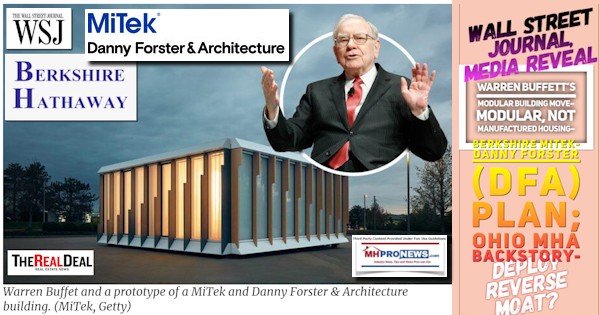
- B) Berkshire has interests in brokering and financing manufactured home land-lease communities.
- C) Berkshire has serious interests in RVs. In recent years, RVs began to outsell manufactured homes by a more than 4 or 5 to 1, sometimes more, depending on the year. Per the RVIA in 1998 there were 292,655 RVs produced. According to the report linked here, there were 373,143 HUD Code manufactured homes produced that year. So, in 1998, manufactured housing in the U.S. outsold RVs in the U.S. by about a ratio of 1.275. In 2021, per the RVIA, RVs produced 600,240 units vs. 105,772 MHs. That’s almost 6 to 1 in favor of RVs. Do you see the dramatic flip that has occurred since 1998? Note that unlike manufactured housing, after Berkshire became involved in RV maker Forest River, the RV industry grew. But in manufactured housing, after Berkshire Hathaway (BRK) got involved in Oakwood manufactured housing in 2002 and Clayton Homes in 2003, the manufactured housing industry has declined.
- D) Berkshire has serious interests in an array of conventional housing, as Bing AI noted above.
- E) Warren Buffett has said that Berkshire’s favorite holding period is “forever.” But they do sell out their interests in firms. Berkshire sold out their interests in IBM. Berkshire sold out their interests in Fannie Mae and Freddie Mac a few years before the financial crisis exploded as a national issue. Yes, there were bad loans – a lot of them – in manufactured housing in the late 1990s or early 2000s that caused the Government Sponsored Enterprises (GSEs) of Fannie Mae and Freddie Mac heartburn. But after that period there was a far worse period of losses in conventional housing that the GSEs were involved in via the subprime mortgages’ fiasco.
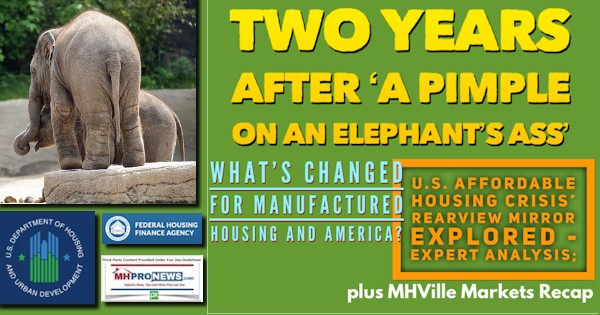

- F) If Clayton Homes’ manufactured housing segment (remember, Clayton now owns several site builders) somehow crashed, burned and disappeared tomorrow, Berkshire would hardly notice.
There are obviously several aspects to Mark Weiss’ analysis of the importance of definitions and why it matters with respect to the bill that MHI is pushing with respect to the removable chassis. But when he mentioned the various ways that others in housing, RVs, tiny houses, etc. could attempt to hijack the legislative process, that is a warning that should not be ignored.
- G) Recall that the evidence is arguably clear that MHI has utterly failed on the implementation of the Manufactured Housing Improvement Act (MHIA) of 2000 and its critical “enhanced preemption” provision.
- H) Recall that MHI has apparently failed on their claimed interest in getting the Duty to Serve (DTS) manufactured housing implemented for chattel lending for mainstream manufactured housing.
- I) Recall that MHI has arguably been duplicitous, inept, or worse on the Department of Energy (DOE) rule.
- J) Anyone who has carefully examined the facts, evidence, and history who still sincerely thinks that MHI in recent years has been much more than a posturing, projecting, razzle dazzle operation that routinely benefits consolidators over independents has not read – or studied – enough reports like the ones linked below.
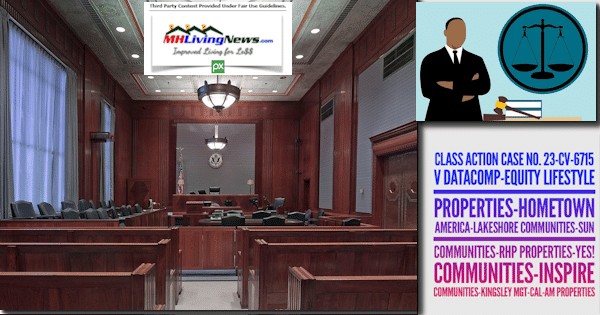
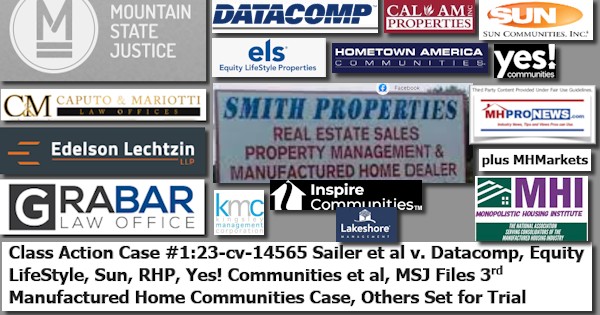
When longtime MHI member Marty Lavin told MHProNews the following, keep in mind he worked with several of those firms.
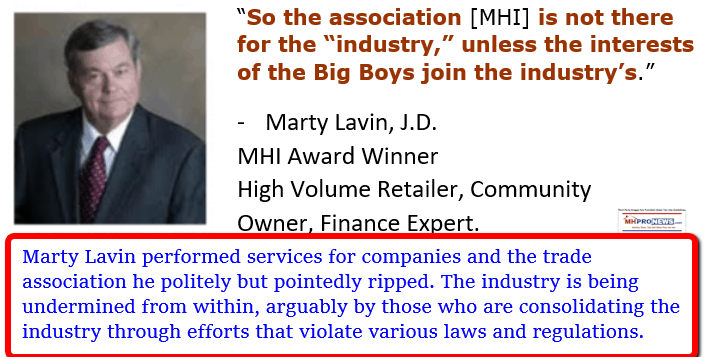
So, it isn’t just MHARR. It isn’t just MHLivingNews or MHProNews. It is also people who were in the MHI orbit for some time that recognized that the industry is underperforming for apparently self-serving reasons. There are no coincidences. And follow the money trail. Think about those points from the late Senator William Proxmire (D) and how they apply to MHVille. Then re-read the above.
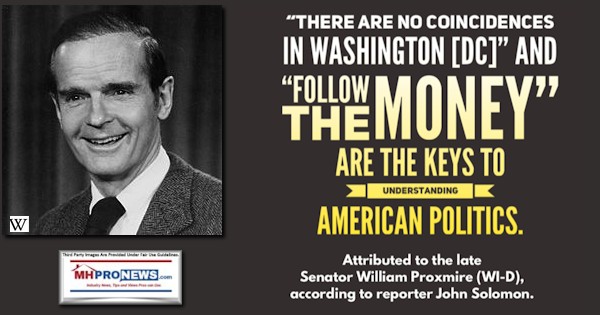
Programming Notice: special reports are just over the horizon. Quarterly reports are coming too. Stay tuned to your source for the most complete manufactured housing “Industry News, Tips, and Views Pros Can Use” © where “We Provide, You Decide.” ©
Part III – is our Daily Business News on MHProNews stock market recap which features our business-daily at-a-glance update of over 2 dozen manufactured housing industry stocks.
This segment of the Daily Business News on MHProNews is the recap of yesterday evening’s market report, so that investors can see at glance the type of topics may have influenced other investors. Thus, our format includes our signature left (CNN Business) and right (Newsmax) ‘market moving’ headlines.
The macro market move graphics below provide context and comparisons for those invested in or tracking manufactured housing connected equities. Meaning, you can see ‘at a glance’ how manufactured housing connected firms do compared to other segments of the broader equities market.
In minutes a day readers can get a good sense of significant or major events while keeping up with the trends that are impacting manufactured housing connected investing.
Reminder: several of the graphics on MHProNews can be opened into a larger size. For instance: click the image and follow the prompts in your browser or device to OPEN In a New Window. Then, in several browsers/devices you can click the image and increase the size. Use the ‘x out’ (close window) escape or back key to return.
Headlines from left-of-center CNN Business – from the evening of 11.7.2023
- S&P 500 and Nasdaq Composite notch longest streak of gains in two years
- Customers shop at a Walmart store on May 18, 2023 in Chicago, Illinois.
- Walmart is making noticeable changes in every store for morning shoppers. Here’s why
- A WeWork co-working office space in San Francisco. WeWork filed for bankruptcy Monday.
- 20% of US offices are vacant. WeWork’s bankruptcy will make the problem worse
- US credit card balances see largest yearly leap on record
- A statue of founder Benjamin Franklin sits in front of College Hall at the University of Pennsylvania on Saturday, July 3, 2021 in Philadelphia, Pennsylvania.
- More than 20 members of Congress press UPenn about antisemitism on campus
- Homes in Centreville, Maryland, US, on Tuesday, April 4, 2023. The Mortgage Bankers Association is scheduled to release mortgage applications figures on April 5.
- This is the least affordable housing market since 1984. It’s getting worse
- The logo of the Instagram app is seen on the screen of a smartphone in 2021.
- Execs ignored the damage Instagram does to teens, Meta whistleblower tells Congress
- Most people would love a four-day workweek. But it doesn’t work for everyone
- Left: television host George Stephanopoulos; right: congressman Steve Scalise.
- George Stephanopoulos grilled a GOP congressman on the 2020 election. Here’s why he said it had to be done
- A customer withdraws money from an automatic teller machines (ATM) inside a Bank of America Corp. branch in New York, U.S., on Saturday, Jan. 13, 2018.
- More Americans are yanking money from their 401(k) plans to pay the bills
- The hybrid Ramcharger pickup is good for anyone scared of going EV
- Climate change is impacting the home insurance industry and damaging the housing market
- Italy threatens to seize more than $800 million from Airbnb over unpaid taxes
- Meta prohibits generative AI tools for political ads
- Deposit delays: Fed tells banks to get customers help
- WeWork files for bankruptcy
- Kahlúa created a $105 fragrance that smells like an espresso martini
- Yet another CEO goes AWOL in China
- Meet the guy in charge of deciding how to spend $1.2 trillion from Biden’s infrastructure bill
- He was laid off by Elon Musk. Within hours, he had a plan to outdo Twitter
- UBS posts large loss on costs of Credit Suisse takeover
- Chinese leaders defend state of economy at global finance summit in Hong Kong
- Developing countries owe China at least $1.1 trillion – and the debts are due
Note: to expand this image below to a larger or full size, see the instructions
below the graphic below or click the image and follow the prompts.



